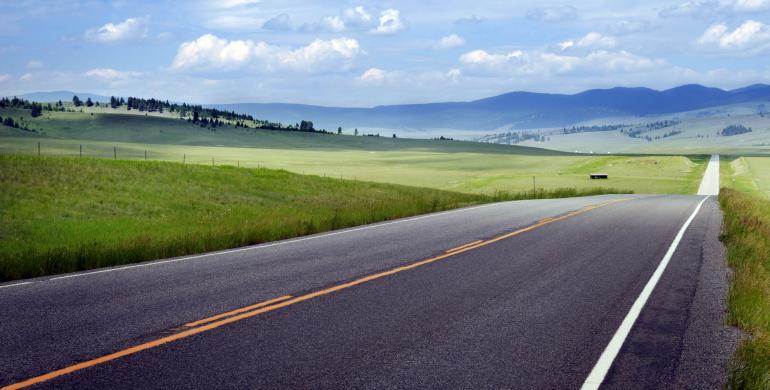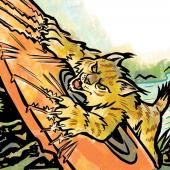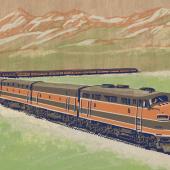Montana in 30 Years: Transportation
Interview with Dr. Ahmed F. Al-Kaisy, PhD, PE

 Ahmed Al-Kaisy is a transportation engineer and a professor at Montana State University in Bozeman, Montana. He also leads the safety and operations research at the Western Transportation Institute and is a registered professional engineer in Montana. Prior to joining Montana State University, Ahmed worked for universities in Canada and Illinois upon finishing his graduate studies. Besides teaching, he enjoys doing research with graduate and undergraduate students on various transportation topics and has widely published his work in scientific journals and conference proceedings. He has authored/co-authored more than a hundred publications in his field along with tens of research reports working on projects for local, state and federal sponsors. Ahmed lives with his wife and three children in Bozeman, Montana.
Ahmed Al-Kaisy is a transportation engineer and a professor at Montana State University in Bozeman, Montana. He also leads the safety and operations research at the Western Transportation Institute and is a registered professional engineer in Montana. Prior to joining Montana State University, Ahmed worked for universities in Canada and Illinois upon finishing his graduate studies. Besides teaching, he enjoys doing research with graduate and undergraduate students on various transportation topics and has widely published his work in scientific journals and conference proceedings. He has authored/co-authored more than a hundred publications in his field along with tens of research reports working on projects for local, state and federal sponsors. Ahmed lives with his wife and three children in Bozeman, Montana.
Let's start with the most important question facing any American lucky enough to be alive in 2050. How long have we had flying cars?
In recent years, flying cars technologies have come a long way and what once viewed a science fiction will soon become a reality. As we speak, start-ups and major brands are developing them, including Boeing, Hyundai, Airbus, Toyota and Uber. It’s a market that should continue to mature during this decade and then boom globally. In 2050, it would be around 20 years or more into commercial application of flying cars and flying taxis in our major cities.
Do you expect that transportation will still primarily be driven by fossil fuel in 2050?
No quite, while fossil fuel will still be an important source of energy for moving people and goods in 2050, clean energy alternatives are expected to claim a higher share of the energy market where zero-emission vehicles become a real rival to gasoline and diesel-powered vehicles. To address climate change and other environmental concerns, many European countries, China, India and major cities outside the US are taking bold measures to curb the reliance on fossil fuel and promote clean energy alternatives in driving our vehicles. In 2018, more than 49% of the new car sales in Norway were electric and hybrid vehicles, compared to 2% in the US. Driven by the success of Tesla, major brand auto manufacturers in the US and abroad are all competing to claim their share of the massive electric car market not only for passenger cars but also for light-duty and commercial trucks. A recent study in California reported that the electric vehicle battery technology has advanced faster and costs have declined more rapidly than expected, to the extent that in 2030, the costs of owning and operating zero-emission vehicles in the US are projected to be lower than gasoline and diesel cars and trucks.
I'm a big fan of the idea of the hyperloop. Do you think we'll ever see one traversing Montana, or is will hyperloops always remain in the realm of science fiction?
No, I don’t expect the hyperloop to make its way to Montana for two main reasons: the large investments in building these systems and the large ridership required for these systems to become feasible. To put things in context, a proposed hyperloop system between Los Angeles and San Francisco was estimated to cost between $6 billion and $7.5 billion in 2013, with analysts expecting the true cost to be several billions above that estimate. Besides SpaceX in the US, a few startups in other countries have been working on advancing the hyperloop technology. However, this advancement has been slowed down by the focus shift on other emerging technologies of autonomous transportation systems.

Okay, okay. Back to reality. It's 2050. What have been the most significant changes in Montana's transportation landscape?
The Montana transportation landscape will certainly be affected by the change in the transportation landscape of neighboring states and the country as a whole. Advanced transportation systems will make its way first to high populous states and regions but will certainly affect the movement of goods and people in Montana. Driverless commercial trucks are expected to move products and goods across our state and autonomous mining operations are examples of the early manifestations of advanced transport systems to our state. Further, Montanans will enjoy a higher level of mobility and personal autonomy, thanks to the driverless transit and para-transit systems that will help spread the service to larger geographic areas. We may also see deployments of other advanced applications such as driverless ride-share and taxi service programs (provided by giant corporations such as Uber) and e-commerce automated systems similar to the ones being currently developed by Amazon and Alibaba. The autonomous systems in air and rail transport will be part of Montana’s transportation landscape as those systems provide service that goes well beyond the boundaries of our state.
There has been a big push recently for additional passenger train service in Montana. Do you see this trend continuing?
Unfortunately, in 2050 using rail transportation for moving people on fixed schedules and routes may not be a viable mode of transport, if not something from the past. The high level of mobility afforded by most Montanans then will simply diminish the market share for rail transportation. Nonetheless, rail transportation will still be a vital and inexpensive mode for transporting bulk goods through our state.
What do you see as Montana's most significant transportation challenges in 2050?
I see two major challenges. The first is the dwindling government resources for maintaining a highway system that is critical to support future smart technologies. A good proportion of the highway network in Montana are local roads and some are even unpaved which may hinder the application of automated systems in remote rural areas. The second challenge is the slow public acceptance of autonomous systems with the perception that those technologies may disrupt the rural laid-back lifestyle many Montanans enjoy and may be unwilling to give up.
How do you imagine public transportation will have changed in Montana in 2050?
Public transportation will reach more and more citizens in our state. One of the current challenges in Montana is that public transport reach is limited to certain towns and communities and is not accessible by many Montanans. In 2050, extending public transport to areas further outside urban communities thus reaching a larger population in our state will happen with the dramatic decline in operating costs of automated systems. Further, public transportation will use clean energy that has zero impact on the environment.












Leave a Comment Here